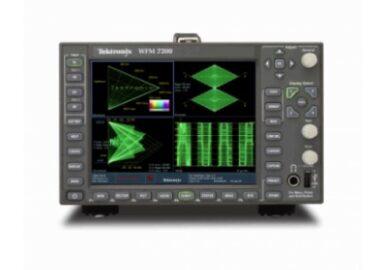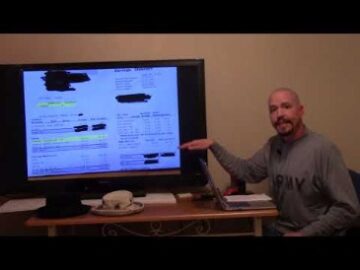
Many systems that specify depreciation lives and methods for financial reporting require the same lives and methods be used for tax purposes. Most tax systems provide different rules for real property (buildings, etc.) and personal property (equipment, etc.). Accelerated depreciation is any method of depreciation used for accounting or income tax purposes that allows greater depreciation expenses in the early years of the life of an asset. Accelerated depreciation methods, such as double declining balance (DDB), means there will be higher depreciation expenses in the first few years and lower expenses as the asset ages.
You must generally depreciate the carryover basis of property acquired in a like-kind exchange or involuntary conversion over the remaining recovery period of the property exchanged or involuntarily converted. You also generally continue to use the same depreciation method and convention used for the exchanged or involuntarily converted property. This applies only to acquired property with the same or a shorter recovery period and the same or more accelerated depreciation method than the property exchanged or involuntarily converted. The excess basis (the part of the acquired property’s basis that exceeds its carryover basis), if any, of the acquired property is treated as newly placed in service property. The applicable convention (discussed earlier under Which Convention Applies) affects how you figure your depreciation deduction for the year you place your property in service and for the year you dispose of it. It determines how much of the recovery period remains at the beginning of each year, so it also affects the depreciation rate for property you depreciate under the straight line method.
Sum-of-years-digits method
If the activity is described in Table B-2, read the text (if any) under the title to determine if the property is specifically included in that asset class. If it is, use the recovery period shown in the appropriate column of Table B-2 following the description of the activity. You will need to look at both Table B-1 and Table B-2 to find the correct recovery period. Generally, if the property is listed in Table B-1, you use the recovery period shown in that table.
- Companies can (and do) use different depreciation methods for each set of books.
- And, unlike some other methods of depreciation, it’s not terribly difficult to implement.
- If you can depreciate the cost of a patent or copyright, use the straight line method over the useful life.
- In case of any confusion, you can refer to the step by step explanation of the process below.
- The company estimates that its useful life will be five years and its salvage value at the end of its useful life would be $1,250.
You begin to depreciate your property when you place it in service for use in your trade or business or for the production of income. You stop depreciating property either when you have fully recovered your cost or other basis or when you retire it from service, whichever happens first. If you bought the stock after its first offering, the corporation’s adjusted basis in the property is the amount figured in (1) above. The FMV of the property is considered to be the same as the corporation’s adjusted basis figured in this way minus straight line depreciation, unless the value is unrealistic. You can depreciate leased property only if you retain the incidents of ownership in the property (explained below).
Double Declining Balance Method Formula (DDB)
You have no remaining cost to figure a regular MACRS depreciation deduction for your property for 2022 and later years. In January 2020, Paul Lamb, a calendar year taxpayer, bought and placed in service section 179 property costing $10,000. Paul elected a $5,000 section 179 deduction for the property and also elected not to claim a special depreciation allowance. In 2022, Paul used the property 40% for business and 60% for personal use. Your section 179 deduction is generally the cost of the qualifying property. However, the total amount you can elect to deduct under section 179 is subject to a dollar limit and a business income limit.
Tradeweb Reports Second Quarter 2023 Financial Results – Business Wire
Tradeweb Reports Second Quarter 2023 Financial Results.
Posted: Thu, 27 Jul 2023 11:00:00 GMT [source]
The sales proceeds allocated to each of the three machines at the New Jersey plant is $5,000. This transaction is a qualifying disposition, so Sankofa chooses to remove the three machines from working as a learning specialist at adp the GAA and figure the gain, loss, or other deduction by taking into account their adjusted bases. When you dispose of property included in a GAA, the following rules generally apply.
Example of the double declining balance method
Let’s examine the steps that need to be taken to calculate this form of accelerated depreciation. Now that we have a beginning value and DDB rate, we can fill up the 2022 depreciation expense column. Just because you may need to calculate your depreciation amount manually each year doesn’t mean you can change methods. Once you choose a method, you need to stick with it for the duration. DDB depreciation is less advantageous when a business owner wants to spread out the tax benefits of depreciation over the useful life of a product. This is preferable for businesses that may not be profitable yet and therefore may not be able to capitalize on greater depreciation write-offs, or businesses that turn equipment over quickly.
Unlike straight line depreciation, which stays consistent throughout the useful life of the asset, double declining balance depreciation is high the first year, and decreases each subsequent year. The double-declining-balance method is used to calculate an asset’s accelerated rate of depreciation against its non-depreciated balance during earlier years of assets useful life. Depreciation ceases when either the salvage value or the end of the asset’s useful life is reached. In determining the net income (profits) from an activity, the receipts from the activity must be reduced by appropriate costs. Depreciation is any method of allocating such net cost to those periods in which the organization is expected to benefit from the use of the asset. Depreciation is a process of deducting the cost of an asset over its useful life.[3] Assets are sorted into different classes and each has its own useful life.
What is the double declining balance (DDB) depreciation method?
Since we already have an ending book value, let’s squeeze in the 2026 depreciation expense by deducting $1,250 from $1,620. The current year depreciation is the portion of a fixed asset’s cost that we deduct against current year profit and loss. The accounting concept behind depreciation is that an asset produces revenue over an estimated number of years; therefore, the cost of the asset should be deducted over those same estimated years.
Looking for a Bargain? 7 Blue-Chip Stocks to Buy That Are Down 5 … – InvestorPlace
Looking for a Bargain? 7 Blue-Chip Stocks to Buy That Are Down 5 ….
Posted: Tue, 01 Aug 2023 11:16:30 GMT [source]
After the first year, we apply the depreciation rate to the carrying value (cost minus accumulated depreciation) of the asset at the start of the period. This is because, unlike the straight-line method, the depreciation expense under the double-declining method is not charged evenly over the asset’s useful life. The next chart displays the differences between straight line and double declining balance depreciation, with the first two years of depreciation significantly higher.
If the software meets the tests above, it may also qualify for the section 179 deduction and the special depreciation allowance, discussed later in chapters 2 and 3. If you can depreciate the cost of computer software, use the straight line method over a useful life of 36 months. For information about qualified business use of listed property, see What Is the Business-Use Requirement? The depreciation expense recorded under the double declining method is calculated by multiplying the accelerated rate, 36.0% by the beginning PP&E balance in each period.

Also, qualified improvement property does not include the cost of any improvement attributable to the following. Generally, this is any improvement to an interior portion of a building that is nonresidential real property if the improvement is placed in service after the date the building was first placed in service. To qualify for the section 179 deduction, your property must be one of the following types of depreciable property. The following are examples of a change in method of accounting for depreciation. Generally, you must get IRS approval to change your method of accounting.
Under the mid-month convention, you always treat your property as placed in service or disposed of on the midpoint of the month it is placed in service or disposed of. The following examples show how to figure depreciation under MACRS without using the percentage tables. Assume for all the examples that you use a calendar year as your tax year.
Therefore, you can depreciate that improvement as separate property under MACRS if it is the type of property that otherwise qualifies for MACRS depreciation. For more information about improvements, see How Do You Treat Repairs and Improvements, later, and Additions and Improvements under Which Recovery Period Applies? You must generally use MACRS to depreciate real property that you acquired for personal use before 1987 and changed to business or income-producing use after 1986. For tax years beginning in 2023, the maximum section 179 expense deduction is $1,160,000.
The Double Declining Balance Method (DDB) is a form of accelerated depreciation in which the annual depreciation expense is greater during the earlier stages of the fixed asset’s useful life. Double declining balance (DDB) depreciation is an accelerated depreciation method. DDB depreciates the asset value at twice the rate of straight line depreciation. The result is your basic depreciation rate, expressed as a decimal. (You can multiply it by 100 to see it as a percentage.) This is also called the straight line depreciation rate—the percentage of an asset you depreciate each year if you use the straight line method.

